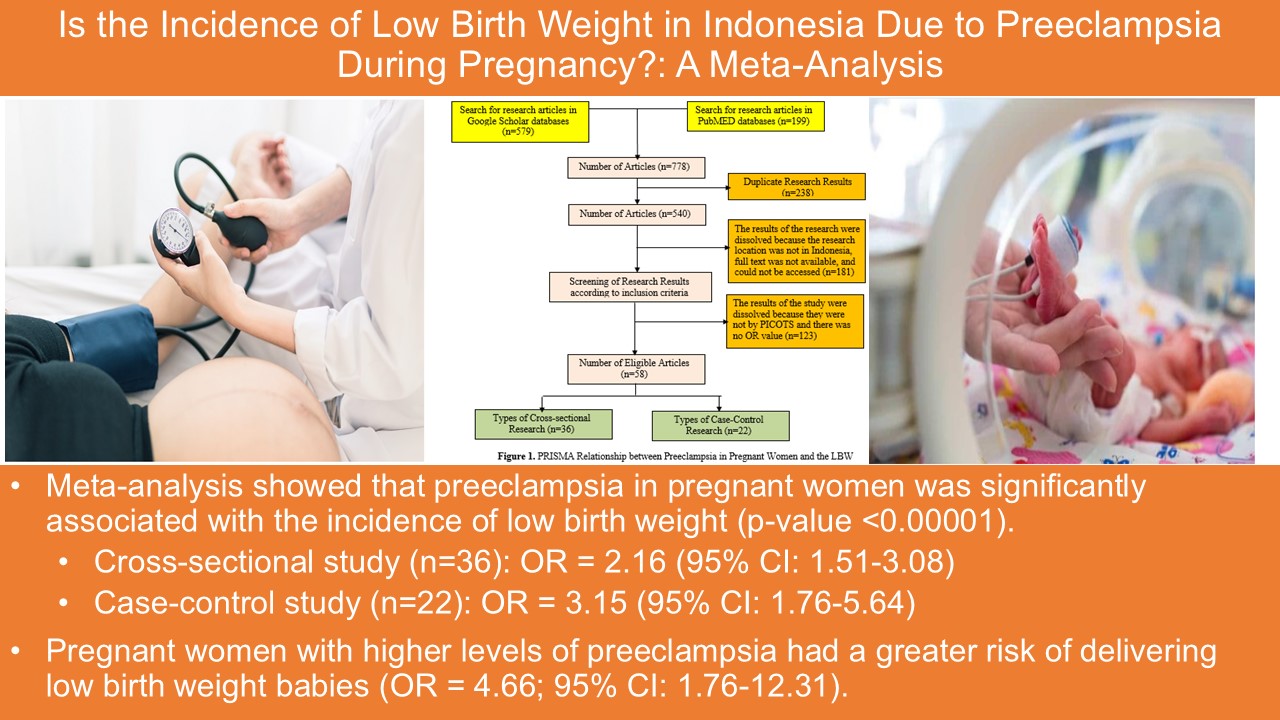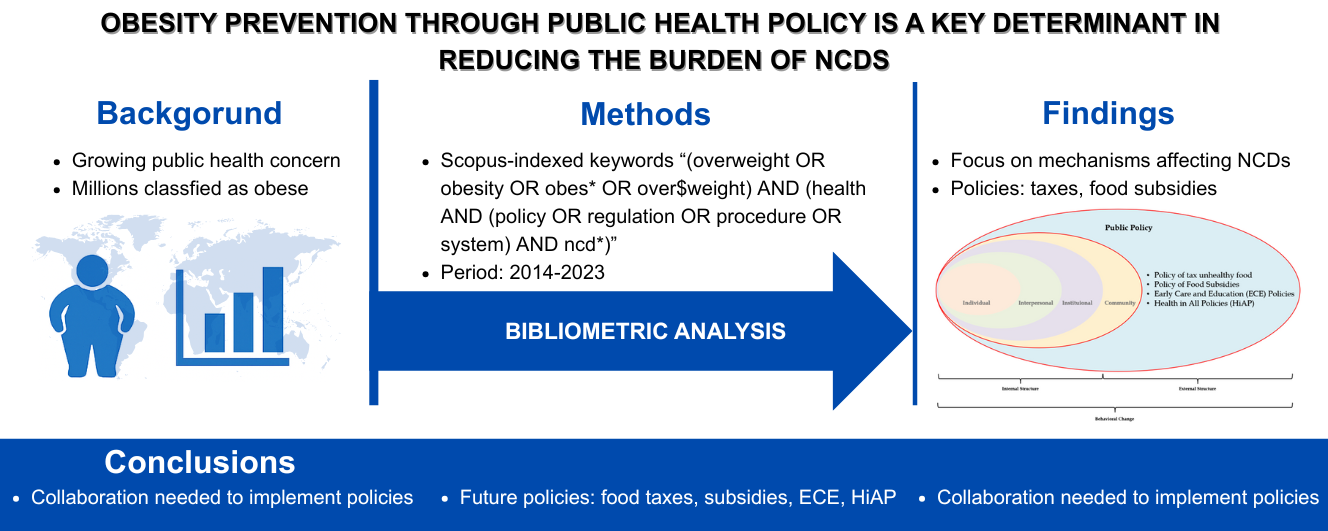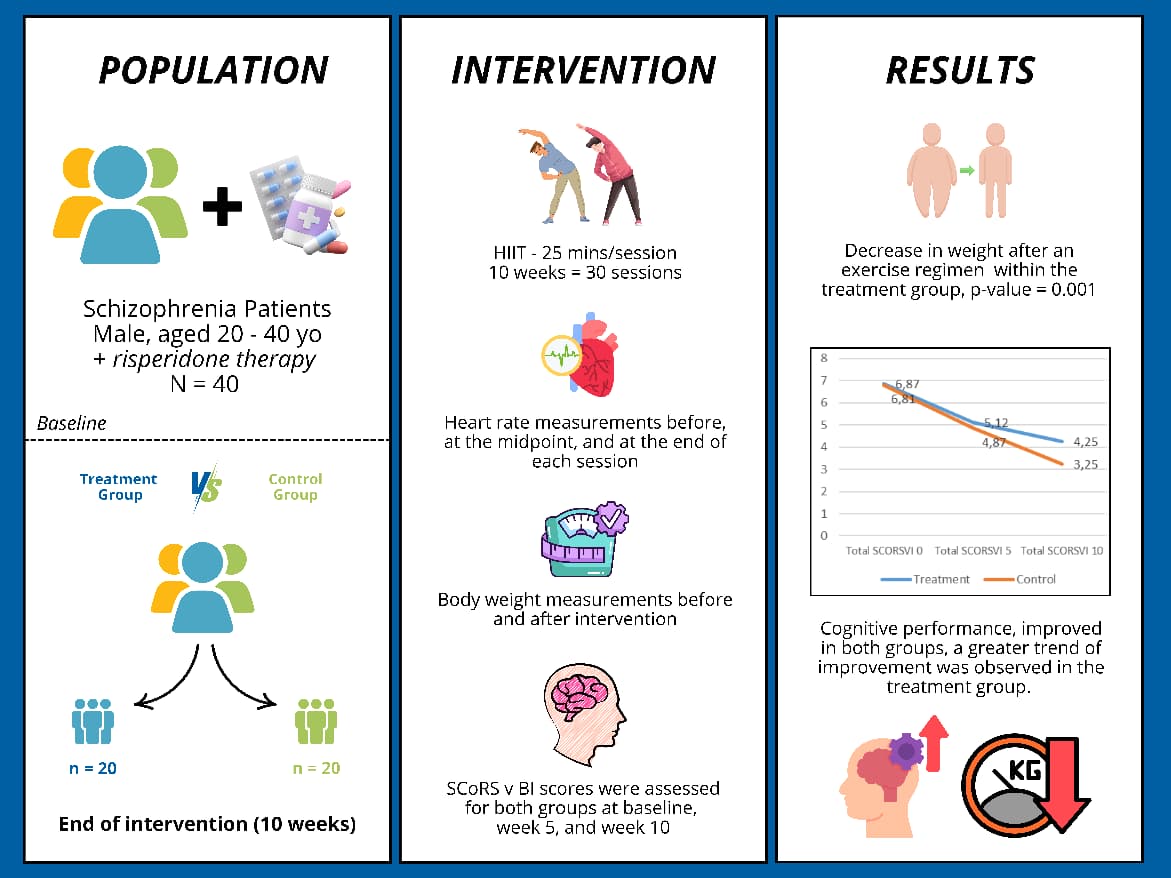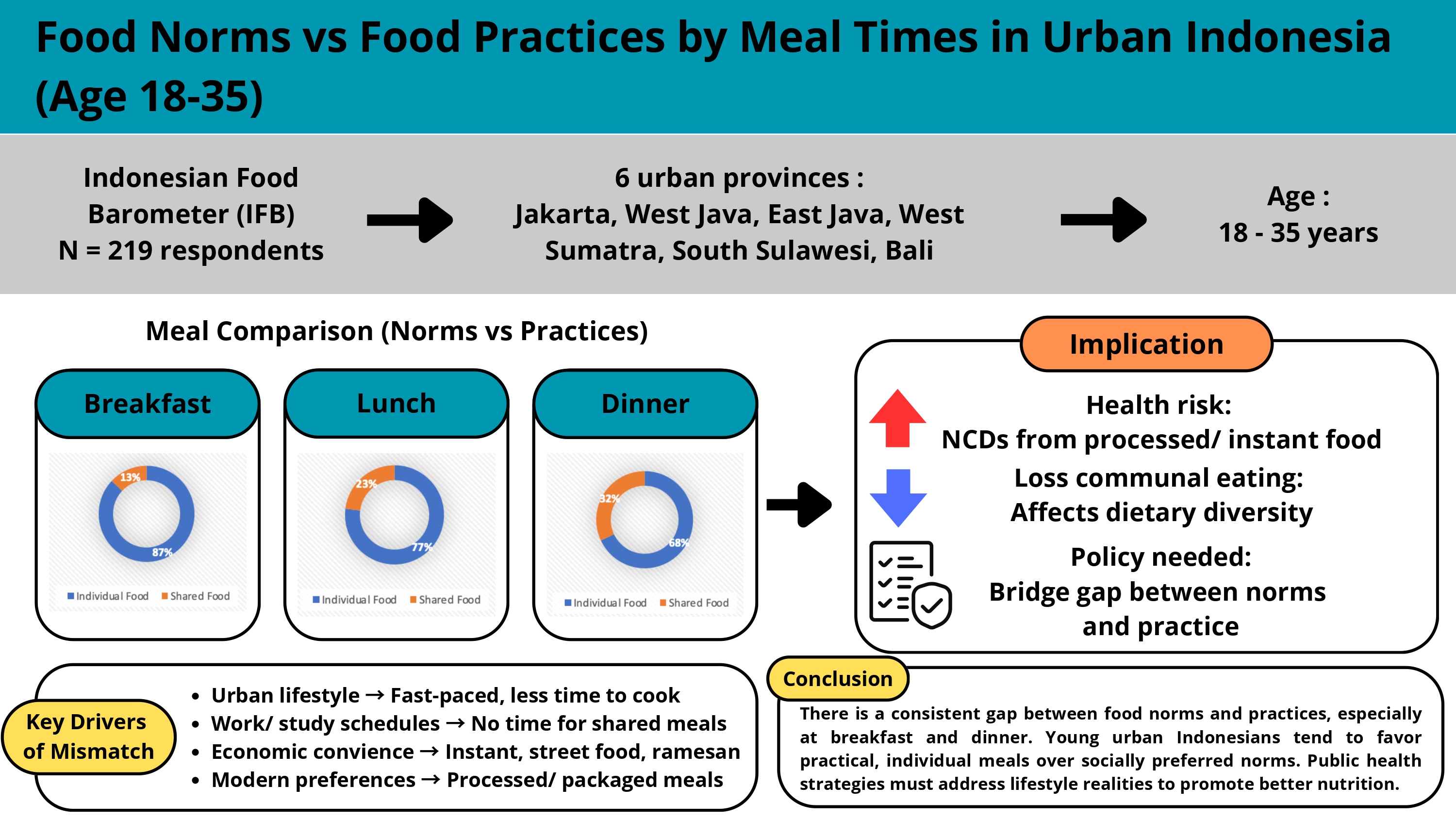Differences in the Breastfeeding Babies Anthropometic Status Based on the Practice of Mothers Consuming Torbangun (Coleus Amboinicus Lour) Leaves in Toba Regency
PERBEDAAN STATUS ANTROPOMETRI BAYI BERDASARKAN PRAKTIK IBU MENYUSUI DALAM MENGKONSUMSI DAUN TORBANGUN (Coleus Amboinicus Lour) DI KABUPATEN TOBA
Downloads
Torbangun leaves (coleus ambonicus lour) are a typical food in Toba Regency that can increase the secretion rate and volume of breast milk production. It is assumed that the existence of lactagogum can increase the achievement of breast milk coverage, but in contrast to the achievement of exclusive breastfeeding, it is still below the national target of 24.3% in Toba Regency.The purpose of this study was to analyze differences in the anthropometric status of breastfeeding babies based on the practice of mothers consuming and building in Toba Regency. The observational research method with a prospective cohort design with an observation time of two months with three anthropometric status measurements was carried out in May-July 2022. The research samples amounted to 226 people, divided into 2 groups, namely babies from mothers who consumed torbangun leaves and babies from mothers who did not consume. Determination of research samples with multistage random, data analysis using independent t-tests and mann-whitney tests. The results of the study did not have a difference in anthropometric status based on the z-score index WAZ (p=0.251), HAZ(p=0.305),WHZ(p=0.373) between babies from mothers who consumed torbangun leaves and babies from mothers who did not consume. Overall, the anthropometric status of the study subjects was between Z scores ≥-2 SD and ≤ 2 SD. It was concluded that there was no significant difference in anthropometric status based on the z-scores of WAZ, HAZ and WHZ.
Abdullah, A., Prawirohartono, E. P., & Helmyati, S. (2013). Efek suplementasi vitamin A pada ibu nifas terhadap pertumbuhan bayi umur 0-4 bulan. Jurnal Gizi Klinik Indonesia, 9(3), 97. https://doi.org/10.22146/ijcn.15440
Alfiah, E., Damanik, M. R. M., Roosita, K., & Fahrudin, M. (2018). The safety evaluation of ethanol extract of torbangun leaves (Coleus amboinicus Lour.) on mouse fetal development. Jurnal Gizi Dan Pangan, 13(1), 27–32. https://doi.org/10.25182/jgp.2018.13.1.27-32
Alves Peixoto, R. R., Bianchi Codo, C. R., Lacerda Sanches, V., Guiraldelo, T. C., Ferreira da Silva, F., Ribessi, R. L.,
Cadore, S. (2019). Trace mineral composition of human breast milk from Brazilian mothers. Journal of Trace Elements in Medicine and Biology, 54(April), 199–205. https://doi.org/10.1016/j.jtemb.2019.05.002
Campbell, S. E., & Bolton-Maggs, P. H. B. (2015). Congenital and acquired bleeding disorders in infancy. Early Human Development, 91(11), 637–642. https://doi.org/10.1016/j.earlhumdev.2015.08.009
Dewi, V. (2013). Asuhan Kebidanan Pada Ibu Nifas. salemba medika jakarta.
Dinas Kesehatan Kabupaten Toba Samosir. (2020). Propil kesehatan dinas kesehatan, Balige, 2020.
Doloksaribu, T. H. (2021). Tanaman Torbangun Bangun-Bangun (Coleus amboinicus L): Potensinya untuk Mendukung Pemberian ASI dan Pertumbuhan Bayi.
Doloksaribu, T. H., Syarief, H., & Marliyati, S. A. (2015). Pertumbuhan bayi dan pemberian asi eksklusif oleh ibu penerima konseling menyusui dan makanan tambahan torbangun 10(2), 77–84.
Eidelman, A. I., & Schanler, R. J. (2012). Breastfeeding and the use of human milk. Pediatrics, 129(3). https://doi.org/10.1542/peds.2011-3552
Gedefaw, M., & Berhe, R. (2015). Determinates of Childhood Pneumonia and Diarrhea with Special Emphasis to Exclusive Breastfeeding in North Achefer District, Northwest Ethiopia: A Case Control Study. Open Journal of Epidemiology, 05(02), 107–112. https://doi.org/10.4236/ojepi.2015.52014
Hutajulu, T., & Junaidi, L. (2013). Manfaat Ekstrak Daun Bangun-bangun (Coleus emboinicus L.) Untuk Meningkatkan Produksi Air Susu Induk Tikus. Indonesian Journal of Industrial Research, Vol. 7, pp. 15–24.
Innis, S. M. (2014). Impact of maternal diet on human milk composition and neurological development of infants. American Journal of Clinical Nutrition, 99(3), 734–741. https://doi.org/10.3945/ajcn.113.072595
Iwansyah, A. C., Damanik, M. R. M., Kustiyah, L., & Hanafi, M. (2017). Potensi Fraksi Etil Asetat Daun Torbangun (Coleus amboinicus L.) dalam Meningkatkan Produksi Susu, Bobot Badan Tikus, dan Anak Tikus. Jurnal Gizi Dan Pangan, 12(1), 61–68. https://doi.org/10.25182/jgp.2017.12.1.61-68
Kementrian Kesehatan RI Dirjen Bina Gizi Dan Kesehatan Ibu Dan Anak Direktorat Bina Gizi. (2014). Buku Standar Pemantauan Pertumbuhan Balita (3rd ed.). Jakarta: Kementerian Kesehatan RI.
Lestari, A., Trisyani, & Widiasih. (2012). Motivasi Ibu Bekerja Dalam Memberikan Asi Eksklusif Di Pt. Dewhirst Men'S Wear Indonesia. Students E-Journal, 1(1), 29. Retrieved from http://jurnal.unpad.ac.id/ejournal/article/view/681
More, J. (2013). Infant, Child and Adolescent Nutrition A Practical Handbook. Newyork, CRC Press.
Nisar, M. U., Anwar ul Haq, M. M., Tariq, S., Anwar, M., Khawar, A., Waqas, A., & Nisar, A. (2016). Feeding Patterns and Predictors of Malnutrition in Infants from Poor Socioeconomic Areas in Pakistan: A Cross-sectional Survey. Cureus, 8(1), 1–12. https://doi.org/10.7759/cureus.452
Paninsari, D., Mutiara, M., Saragih, M., Aritonang, S. S., Marpaung, F. N., Wau, O. S., ... Kebidanan, D. (2021). Pengaruh Seduhan Teh Daun Bangun-Bangun Terhadap Produksi Asi Di Klinik Pratama Haryanti Medan. 5.
Permenkes. (2020). Peraturan Menteri Kesehatan Republik Indonesia Nomor 2 Tahun 2020 Tentang Standar Antropometri Anak. In Menteri Kesehatan Indonesia (Vol. 21).
Permenkes, R. (2019). Peraturan Menteri Kesehatan Republik Indonesia Nomor 28 Tahun 2019 Tentang Angka Kecukupan Gizi Yang Dianjurkan Untuk Masyarakat Indonesia (Vol. 2).
Probandari, Ari Natalia, Pamungkasari Eti Poncorini, Febrinasari ratih puspita, Sumardiyono, W. V. (2020). Metode penelitian kuantitatif (Strategi menulis proposal penelitian kesehatan) (Hartono, Ed.). Surakarta.
Riskesdas. (2018). Hasil Utama Riset Kesehatan Dasar. Kementrian Kesehatan Republik Indonesia, 1–100. https://doi.org/1 Desember 2013
Saragih, R. (2014). Uji Kesukaan Panelis pada Teh Daun Torbangun (Coleus Amboinicus). Journal WIDYA Kesehatan Dan Lingkungan, 1(1), 46–52.
Sattari, M., Serwint, Neal, & Chen, S. (2013). Work-Place Predictors of Duration of Breastfeeding among Female Physicians. Journal of Pediatrics, 176(5), 139–148. https://doi.org/10.1016/j.jpeds.2013.07.026.Work-Place
Schreck, P. K., Solem, K., Wright, T., Schulte, C., Ronnisch, K. J., & Szpunar, S. (2017). Both Prenatal and Postnatal Interventions Are Needed to Improve Breastfeeding Outcomes in a Low-Income Population. Breastfeeding Medicine, 12(3), 142–148. https://doi.org/10.1089/bfm.2016.0131
Sim, T. F., Laetitia Hattingh, H., Sherriff, J., & Tee, L. B. G. (2015). The use, perceived effectiveness and safety of herbal galactagogues during breastfeeding: A qualitative study. International Journal of Environmental Research and Public Health, 12(9), 11050–11071. https://doi.org/10.3390/ijerph120911050
Soetjiningsih, DSAK. (2012). asi petunjuk untuk tenaga kesehatan (Dr Soetjiningsih, Ed.).
Sumardiyono, Probandari Ari Natalia, W. V. (2020). Statistik Dasar Untuk Kesehatan Dan Kedokteran (Pamungkasari Eti Poncorini, Ed.).
Syarief, H., Martua Damanik, R., Sinaga, T., & Herta Doloksaribu, T. (2014). Pemanfaatan Daun Bangun-Bangun dalam Pengembangan Produk Makanan Tambahan Fungsional untuk Ibu Menyusui (Utilizationand Product Development of Bangun-bangun Leaves as Supplement and Functional Food for Lactating Mother). Jurnal Ilmu Pertanian Indonesia (JIPI), 19(1), 42.
Victora, C. G., Bahl, R., Barros, A. J. D., França, G. V. A., Horton, S., Krasevec, J., ... Richter, L. (2016). Breastfeeding in the 21st century: Epidemiology, mechanisms, and lifelong effect. The Lancet, 387(10017), 475–490. https://doi.org/10.1016/S0140-6736(15)01024-7

This work is licensed under a Creative Commons Attribution-NonCommercial-ShareAlike 4.0 International License.
- MEDIA GIZI INDONESIA Journal is the copyright owner of all materials published on this website.
- The formal legal provisions for access to digital articles of this electronic journal are subject to the terms of the Creative Commons Attribution-NonCommercial-ShareAlike license (CC BY-NC-SA 4.0), which means that MEDIA GIZI INDONESIA Journal and readers reserve the right to save, transmit media / format, manage in database, maintain, and publish articles as long as it continues to include the name of the Author.
- Printed and published print and electronic manuscripts are open access for educational, research and library purposes. In addition to these objectives, the editorial board shall not be liable for violations of copyright law.


2.png)





















